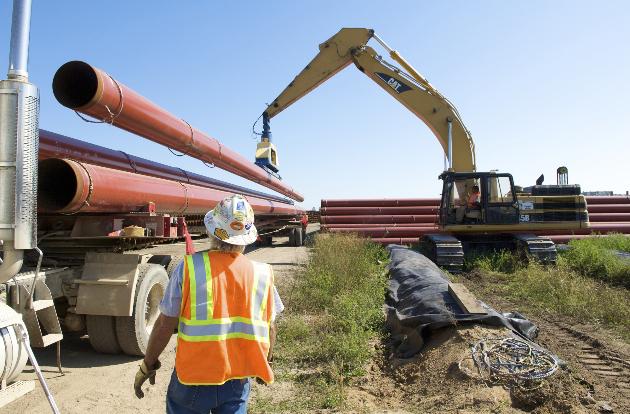The groups said the State Department should not have approved a temporary change.

By David Shaffer, StarTribune
Tribal and environmental groups have sued the U.S. State Department for approving a temporary plan by a Canadian pipeline company to increase the flow of heavy crude oil from Alberta into Minnesota before a federal environmental study is finished.
The lawsuit, filed Tuesday in U.S. District Court in Minnesota, alleges that the State Department violated the National Environmental Policy Act and other laws in approving the temporary increase in oil flow and in not releasing information about it. The suit seeks an injunction to halt the project.
“It is a blatant attempt to avoid the ongoing State Department review process,” Doug Hayes, staff attorney for Sierra Club, one of the groups behind the lawsuit, said on a conference call Wednesday. “It is an attempt to increase tar sands imports into the United States without any public scrutiny.”
The State Department said by e-mail that its policy is not to comment on litigation.
Enbridge Energy won Minnesota regulatory approval in August to complete a $200 million upgrade of its 1,000-mile Alberta Clipper pipeline, boosting its flow by adding pumping stations. The line carries heavy crude from the Alberta oil sands region across the state, supplying refineries across the Midwest.
Part of the upgrade is already finished, but the State Department hasn’t yet approved a presidential permit for Enbridge to legally increase cross-border oil shipments. That’s the same permit needed for TransCanada’s proposed Keystone XL pipeline through Western states, on which the Obama administration has not yet acted.
In a move that angered climate and environmental activists, Calgary-based Enbridge got approval from the State Department in July to increase its cross-border oil flows on the Alberta Clipper line by shifting the crude into another, underused pipeline at the border.
The underused pipeline, known as Line 3, already has a presidential permit to operate at higher volumes. It also carries Canadian crude to Midwest refineries, but operates at a reduced flow for safety reasons. The 1960s-era Line 3 suffers from corrosion and has ruptured several times, and Enbridge has announced plans to rebuild it by 2017.
To make the cross-border switch, Enbridge recently replaced a 17.5-mile segment of Line 3 at the border — allowing it operate at high capacity — and installed valves linking it to the parallel Alberta Clipper Line. On only that border segment, the flows of the two lines are switched, strictly for legal reasons. After the crude oil enters the United States, valves send the oil back into the newer Alberta Clipper line.
The State Department decided that the switch was legal under Line 3’s existing permit.
The lawsuit was filed by Duluth-based environmental attorney Marc Fink on behalf of the White Earth Nation, Honor the Earth, Indigenous Environmental Network, Minnesota Conservation Foundation, MN350, Center for Biological Diversity, Sierra Club and National Wildlife Federation.
The suit alleges the State Department violated federal law by approving the temporary border project before completing an environmental-impact statement on the Alberta Clipper upgrade. That environmental study is underway but likely won’t be completed for a year. Keystone XL also has been held up by an environmental study.
The suit also alleges violations of the Administrative Procedures Act, which governs agency actions, and the Freedom of Information Act for not releasing information about the project. The suit further cites 19th-century treaties giving Indian tribes hunting, fishing and gathering rights in the region crossed by the Alberta Clipper pipeline.
Enbridge, which is not a defendant, said in a statement that it believes the State Department acted lawfully to approve the switch. It allows the company to temporarily meet customer demands using “existing permitted cross-border capacity,” but does not address long-term needs to transport North American oil to refineries, spokeswoman Lorraine Little said in an e-mail.
